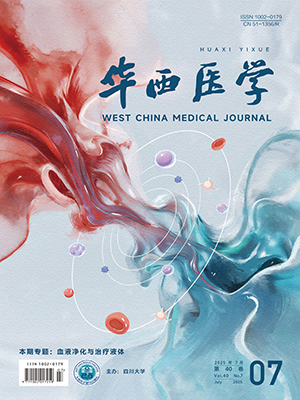| 1. |
罗娟, 汪泓, 廖晓瑜. 上海城镇职工医疗保险费用影响研究——基于供给诱导需求的视角. 现代管理科学, 2015(5): 69-71.
|
| 2. |
杨吉明. 医疗费用控制与卫生经济学的基石研究. 行政事业资产与财务, 2019(18): 1-9.
|
| 3. |
刘荣飞, 薛梅, 李紫灵. DRG 的国内外研究进展. 卫生经济研究, 2020, 37(10): 42-45, 48.
|
| 4. |
何青, 江芹, 郎婧婧, 等. 典型国家和地区 DRG 实施过渡期经验探讨. 中国卫生经济, 2017, 36(11): 93-96.
|
| 5. |
刘芬, 孟群. DRG 支付体系构建的国际经验及启示. 中国卫生经济, 2018, 37(8): 93-96.
|
| 6. |
李菲. DRGs 在医院医疗费用支付中的应用研究——基于英国、德国和美国的实证分析. 卫生经济研究, 2019, 36(1): 32-37.
|
| 7. |
常小婉, 万胜凯, 尼燕, 等. 基于 DRGs 的公立医院控费实践与成效分析. 中国卫生事业管理, 2020, 37(1): 35-37.
|
| 8. |
Wagner AK, Soumerai SB, Zhang F, et al. Segmented regression analysis of interrupted time series studies in medication use research. J Clin Pharm Ther, 2002, 27(4): 299-309.
|
| 9. |
Zhang F, Wagner AK, Soumerai SB, et al. Methods for estimating confidence intervals in interrupted time series analyses of health interventions. J Clin Epidemiol, 2009, 62(2): 143-148.
|
| 10. |
Ariel L. Conducting interrupted time-series analysis for single- and multiple-group comparisons. Stata J, 2015, 15(2): 480-500.
|
| 11. |
李洪铮, 唐紫君, 薛龙, 等. 疾病诊断相关分组政策实施对三明市公立医院住院服务效率及费用的影响. 中国卫生资源, 2021, 24(4): 393-396, 404.
|
| 12. |
胡广宇, 刘立煌, 吴世超, 等. 基于间断时间序列分析的 DRG-PPS 改革效果研究. 中国卫生政策研究, 2019, 12(10): 23-28.
|
| 13. |
王洪彬, 江芹, 张振忠. 按病例组合付费实施效果的实证研究. 中国卫生经济, 2015, 34(7): 17-19.
|
| 14. |
季新强, 王小艺, 张耀光. 北京医耗联动综合改革对肺癌手术病例住院费用的影响. 中国医院管理, 2022, 42(1): 64-67.
|
| 15. |
白云, 白玉祥, 潘峰, 等. 基于间断时间序列分析的电子病历实施效果研究. 中国卫生质量管理, 2014, 21(1): 82-85.
|
| 16. |
陈治水, 冷家骅, 刘忆, 等. 运用间断时间序列分析北京市门诊特种病医保政策实施效果. 中国卫生统计, 2019, 36(1): 141-143.
|
| 17. |
郎婧婧, 周海龙, 于雪梅, 等. 总额预付改革对住院患者费用控制效果的研究. 中国卫生经济, 2017, 36(2): 20-22.
|
| 18. |
李超凡, 何佳琳, 杨燕绥. DRGs 支付方式改革前后医院技术效率比较研究——以 F 市为例. 中国卫生事业管理, 2021, 38(9): 641-644.
|
| 19. |
刘梦灵, 贾明远, 林倩, 等. 取消耗材加成政策对县级公立医院医疗费用结构的影响. 中国卫生经济, 2021, 40(7): 29-32.
|
| 20. |
吴晶晶, 陈志仙, 张昕男, 等. 江苏省公立医院综合改革效果评价研究——基于间断时间序列分析. 中国卫生事业管理, 2018, 35(3): 163-166.
|
| 21. |
刘文凤, 玄桂英, 韩梅, 等. 基本医保支付方式内在逻辑关系与改革路径选择. 中国卫生事业管理, 2018, 35(10): 737-739.
|




